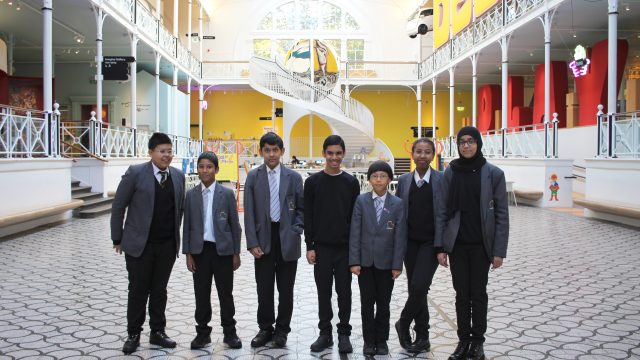As the former Head of Glasgow Museums Mark O’Neil once observed: ‘Museums can only be as good as their analysis of society and their awareness of people’s lives.’ Those words neatly sum up for me the start of my research journey, exploring how consumer data might increase that awareness of how people live. I became preoccupied with how the everyday things consumed outside a museum might influence public curiosity about collections.
Unlikely as it might sound, my research explored a correlation between shopping habits and the objects the V&A has in storage. The challenge driving this approach was how to diversify audiences and so open up the V&A’s stored collections at a scale beyond what’s imaginable currently.
To explain further, for more than 20 years, the UK museum sector has acted to be ever more socially inclusive, giving disadvantaged and marginalised communities a stake in the curation and interpretation of collections. Along with that invitation to communities to interpret and contribute to the knowledge of museum objects, comes the recognition that museum experts are not alone in having a say about collections’ significance. Instead it is members of the public, in their various community guises, who create new ways of using museum collections and spaces. In this way, over recent years the resources of museums have been used to support debate and dialogue around social issues in local communities.
For many, the work involved in giving communities a stake in the museum has proved to be an effective way to engage with groups that may previously have found museums irrelevant to their lives. Public engagement activities require staff who are aware of networks that provide routes into the community and have an in-depth understanding of diverse potential audiences. And building community networks has contributed much to the democratisation of public access and engagement with collections. Yet it would be misleading to view the existing methods of engagement as some panacea of an open and democratic public museum. Rather, we should view such practices in full light of their problems and pitfalls, while also acknowledging the potential of alternative and complementary methods to achieving a more inclusive museum.
Although network relationships are one of the strengths of community-based practice, the fact is that building and maintaining these networks is labour intensive, expensive and difficult to scale. And the size of the challenge to scale public engagement work is clear when we look at the demographic data of those who actually visit museums. It’s an all too familiar story for museum professionals to find that still, the socio-demographic of visitors is mostly in the upper-socioeconomic classes with the lower-socioeconomic classes being the least likely to visit. From the visitor data we see that the reach of public engagement work is limited to a small percentage of all the socially excluded and culturally disenfranchised.
If this unequal state is to change then we need new non-labour intensive methods for gaining in-depth understanding of diverse potential audiences. This is the problem that led me to investigate the possibility of some kind of correlation between the nation’s shopping baskets and the V&A’s collection – after all it has been long established that consumer habits and socioeconomic class are closely correlated, as are socioeconomic class to museum visiting and non-visiting. These correlations mean that I can say with some confidence that the shopping basket of a museum non-visitor will be quite different to that of a museum visitor.
It is also true to say that our purchasing choices tell us a lot about who we are, and who we are not.
Access to the data on those purchasing choices is different from 20 years ago. Today we have a proliferation of consumer data from store loyalty cards, online ticket sales and other consumer registers, all of which record aspects of life previously outside the scope of measurement. Seeing the potential of consumer data to answer the problem of scale in public engagement is simply to recognise that data analysis can make individual human behaviour visible in aggregate. This means we get to see patterns in the way an individual shares common tendencies, and this characteristic has the advantage of providing both quantitive and qualitative insight into the lives of the V&A’s non-visitors. Store loyalty cards, for example, contain postcode information and so open up insights into how people live in a way that’s connected to the place they live. The data held behind those cards reveals the scale at which consumer tastes correlate with both demography and residential geography. Link this data with the information museums collect when they survey their visitors, and we might see that people’s postcodes are a robust predictor of the statistical likelihood of them visiting the V&A.
While such data analysis might give insights into the habits of the V&A’s non-visitors, could it be useful in productive ways for museums?
While data analysis may offer solutions to challenges of scale, it presents its own issues. There will be ethical concerns around the role of customer data science in the cultural sector. On the one hand, data scientists found the idea of coming up with a hypothesis before analysing the data an uncomfortable, even unethical, position. There is also the issue that any trade-off between public data and public benefit must also protect individual privacy. There needs to be much more clarity between personal and public data. If we are to increase public engagement through data analysis, we first need to address any cultural barriers to its use. Now that’s a tantalising thought for my next stage of research!
Julian Hartley was a research fellow on the Show + Tell + Share project (January 2018 – June 2019) which is generously supported by the Andrew W. Mellon Foundation as part of the V&A Research Institute.



